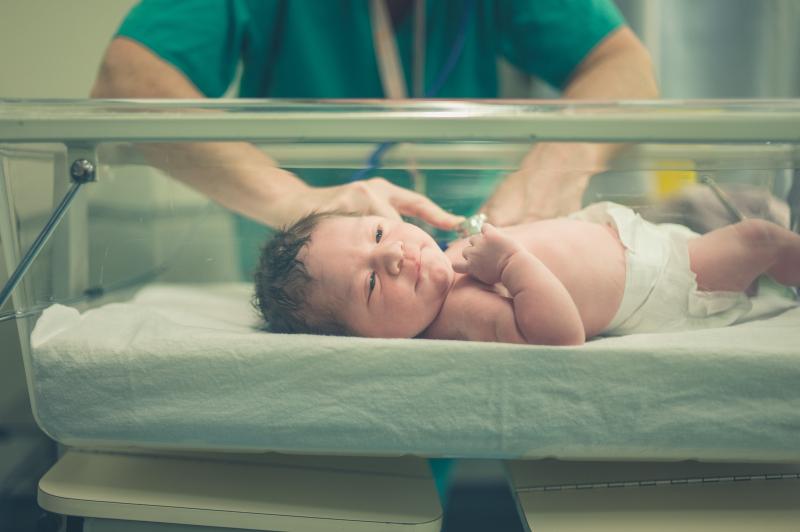
Neonates undergoing continuous electroencephalography (cEEG) for a neurologic injury have an elevated risk of seizure initially, according to a study. Seizure risk over time may be predicted by EEG monitoring indication and early epileptiform charges.
The study included 291 neonates 34–48 weeks postmenstrual age who underwent cEEG to monitor for acute neonatal encephalopathy (ANE; n=101), suspicious clinical events (SCEs; n=142) or other high‐risk conditions (OHRs; n=48). Median cEEG monitoring duration was 84, 26 and 24 hours, respectively. At the time of cEEG initiation, the majority of the population (82 percent) were term infants, with median gestational age being 40 weeks.
Seizures occurred in 80 neonates (28 percent). The risk of future seizure was 8.5 percent after 24 hours of seizure‐free cEEG monitoring, <5 percent after 42 hours and <1 percent after 73 hours.
Overall seizure risk was lower in neonates monitored for ANE vs OHR (p=0.004) or SCE (p=0.097). The time course of seizure presentation varied by group, such that the odds of future seizure were <1 percent after 17 hours of seizure‐free monitoring in the SCE group, but longer in the OHR group (42 hours) and the ANE group (73 hours).
Furthermore, seizure risk in each group increased in the presence of early epileptiform discharges (ANE: adjusted hazard ratio [aHR], 4.32, 95 percent confidence interval [CI], 1.23–15.13; p=0.022; SCE: aHR, 10.95, 95 percent CI, 4.77–25.14; p<1e‐07; OHR: aHR, 56.90, 95 percent CI, 10.32–313.72; p<1e‐05).
These findings suggest that “neonates monitored for OHR and ANE can present with delayed seizures and require longer durations of monitoring,” and that the best early EEG feature to predict seizure risk is early epileptiform discharges, researchers said.
The present data may potentially inform clinical guidelines for monitoring duration and vigilance, offer insights into the time course of insults that provoke seizures, and identify appropriate populations for clinical trials, they added.